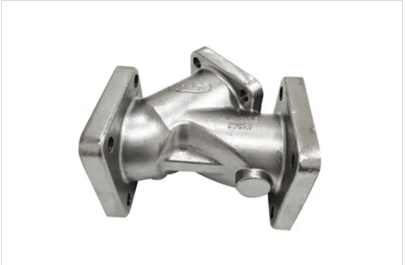Mobile:+86-311-808-126-83
Email:info@ydcastings.com
Understanding the Importance of Motor Housing in Machinery Design and Functionality
Understanding Motor Housing Its Importance and Design
Motor housing plays a critical role in the functionality and longevity of electric motors. It is the external casing that encases the motor's components, protecting them from environmental hazards while providing structural integrity. The design and construction of motor housing directly influence the motor's performance, efficiency, and overall reliability.
One of the primary functions of motor housing is to shield the internal components from dust, moisture, and other environmental factors. This is particularly important in applications where motors are exposed to harsh conditions, such as in industrial settings, automotive environments, or outdoor applications. A well-designed motor housing ensures that the internal workings of the motor remain free from contaminants, which can significantly extend the motor’s lifespan.
In addition to protection, motor housing contributes to the thermal management of the motor. Electric motors generate heat during operation, and efficient dissipation of this heat is essential for maintaining optimal performance. Many motor housings incorporate design features such as vents, fins, or heat sinks that enhance airflow and heat dissipation. By managing the temperature within the motor, the housing helps prevent overheating, which can lead to reduced efficiency and potential failure of the motor.
Material selection is another critical aspect of motor housing design
. Common materials used include aluminum, steel, and various plastics, each providing distinct advantages. Aluminum, for instance, is lightweight and offers good thermal conductivity, making it an excellent choice for applications requiring effective heat management. Steel, on the other hand, provides durability and strength, making it suitable for heavy-duty applications. The choice of material often depends on the specific application requirements, including weight, cost, and environmental exposure.motor housing

Furthermore, the design of the motor housing can affect the electromagnetic performance of the motor. Variations in housing shape, thickness, and conductive properties can influence the motor’s efficiency and effectiveness. Engineers often use advanced simulation tools to optimize housing designs for both structural integrity and electromagnetic performance, ensuring that the motor operates at peak efficiency.
The mounting method of motor housing is also crucial, as it affects how the motor is integrated into a larger system. Whether it’s bolted, welded, or utilizing brackets, the way the motor housing is mounted can impact vibration control, alignment, and overall system dynamics. A poorly mounted motor may experience excessive vibrations, leading to premature wear and tear or even catastrophic failure.
In recent years, advances in manufacturing technologies have led to more innovative designs in motor housing. The advent of 3D printing and CNC machining has allowed for more complex geometries and lightweight structures, which can enhance performance while minimizing material usage. These technologies enable manufacturers to create customized motor housings that meet specific operational demands, paving the way for more specialized applications.
Sustainability is an emerging consideration in motor housing design. Manufacturers are increasingly looking for eco-friendly materials and production methods to minimize their environmental impact. Using recycled metals or biodegradable plastics can contribute to more sustainable practices in the motor industry. Additionally, energy-efficient motor designs inherently reduce energy consumption, further promoting sustainability in electric motor applications.
In conclusion, motor housing is an essential component in electric motor design, affecting everything from protection and heat dissipation to performance and sustainability. As technology continues to evolve, so will the designs and materials used in motor housings. By prioritizing effective housing solutions, manufacturers can ensure that electric motors operate efficiently, reliably, and sustainably in a variety of environments. Understanding and innovating motor housing designs will be vital in meeting the demands of modern applications and advancing the future of motor technology.
-
Understanding Metal Casting TechniquesNewsApr.02,2025
-
Understanding Exhaust Manifolds for Enhanced Engine PerformanceNewsApr.02,2025
-
The World of Metal FabricationNewsApr.02,2025
-
Key Components for Pump and Turbo EfficiencyNewsApr.02,2025
-
Essential Tools for Automotive Maintenance and RepairNewsApr.02,2025
-
Durable Valve Components for Effective Water ManagementNewsApr.02,2025











